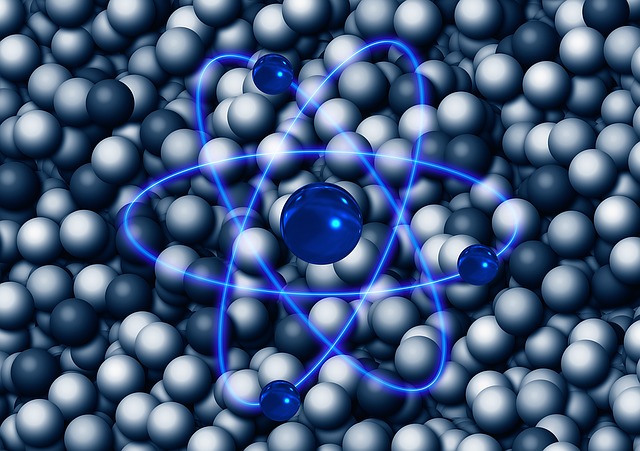Hamid-Reza Khoyi: "Decarbonisation goal: nuclear is part of the solution"

HAMID-REZA KHOYI NUCLEAR - The climate crisis before, the war in Ukraine after, led us to reflect more on the topic of nuclear power. I’m not talking about it in terms of a weapon of destruction, but as a possible source of energy. The controversies about this possible use are multiple and almost all related to the safety of the installations. The Chernobyl and Fukushima disasters are alive in the memory of many generations still alive. But is it still valid today to use these examples to obstruct the use of nuclear energy as a source of clean energy? Let’s talk about it together.
Global Warming
The Paris agreements have established that every nation - but also individuals - must commit to implementing plans that allow us to keep global warming below 1.5,000 by 2100. Despite this, there is growing fear that temperatures will reach the point of no return between 2023 and 2052. For this reason, efforts have been intensified, also by the UN itself, to find the best solutions to reach the climate objectives of the 2030 Agenda as soon as possible.
The IPCC, the Intergovernmental Panel on Climate Change, the UN body responsible for evaluating scientific research on climate change, published in 2018 the "Global Warming of 15 ºF C". It is a report based on 6 thousand different studies, from which emerged four possible and feasible scenarios, reported by "Avvocato dell'Atomo".
1- Scenario of efficiency:
"The demand for energy falls thanks to the efficiency of social, technological and business processes by 2050. It remains only to reforest.
2- Scenario of sustainability:
It foresees an increase in the use of sustainable and low-carbon energy, international cooperation; sustainable consumption patterns and the use of Bioenergy with carbon capture & storage (BECCS).
3- Realistic scenario
A middle way: technological and social growth continue at current rates following historical cycles. Emissions are reduced by changing the way energy is produced.
4- Turbo scenario
Intensive global growth. Pollutes at the throttle. How do you reduce emissions? With a massive use of BECCS and CDR (Carbon Dioxide Removal) technologies.
What do these scenarios have in common? All predict an increase in the use of nuclear energy: from 59% to 106% by 2030; from 98% to 501% by 2050. "
Hamid-Reza Khoyi: "Decarbonisation goal: nuclear is part of the solution"
The "Global Warming of 15," C, not only refers to nuclear energy, but also to renewable energy sources. Yes, because nuclear energy is not the solution to decarbonisation but is part of the solutions. Its use cannot, of course, be exclusive, but shared. In fact, both nuclear and renewable have limits.
Let’s start from renewable
They are coach energy sources and not available all over the planet. For example, hydrological sources are limited and alone are insufficient to meet energy requirements. With regard to biomass, they can lead to the opposite effect: increasing our impact on the environment. If plant operators pay more attention to profit than to the well-being of the environment, they could cause massive deforestation to increase revenues.
The nuclear
Nuclear power can cover 20 to 70% of energy needs. Already this data shows us that alone can not cover the entire demand, even if these numbers are much higher than the renewables taken individually. The old generation of reactors, however, needs a large number of water resources to operate and this makes it unusable and highly dangerous in those areas of seismic and hydrogeological risk.
The combination of renewable and nuclear energy, however, should not arise just to make up for the lack of one or the other. They can also be used together to help one increase the use of the other. For example, it is very difficult to obtain permits for the construction of new dams to be used to create artificial reservoirs to produce water energy. If we had more nuclear power plants, we could use them, for example, to supply existing ones through pumping systems powered by nuclear energy. This would create a green production circle that definitively excludes the use of coal and provides a sufficient amount of energy.
The controversies around nuclear energy
The main objections to nuclear energy mainly concern two aspects: safety and the disposal of waste.
When it comes to security, those who object seem to raise a wall that doesn’t allow them to look any further. And what’s beyond that? The technological growth. We are, in fact, condemning systems that today rely on power plants 50 years ago and do not look at progress and evolution made. We cannot rely on the mistakes of the past. There have been massacres - very true - but they come from mistakes that have allowed us to learn. Technology has made great strides in recent decades. Today’s power plants are much more protected and safe so that, now, the purpose of the studies, focuses on making them smaller, so as to occupy less space on the territory.
Power plants may take up less space in the future, but they need to be given that space so that they can be planted. In Italy, for example, many places have been identified to accommodate a nuclear power plant, but nobody wants to make them available. Why? Everyone is afraid of radioactive waste. I do not have the technical skills to be able to give you all the explanations you need, so I invite you to read this in-depth study of the Italian Nuclear Association, which talks about nuclear waste.
What I can say is that we cannot play the blame game with the preservation of the planet.
Change your mind!
It’s never too late to change your mind. I’ll give you the example of Switzerland. There are four nuclear plants in operation here and it has been decided that they will all be closed by 2025. For the moment only one has been deactivated, but only in 2034 the area of the abandoned plant can be used. For the other 3 we do not know anything yet and it is very likely that it will not come to the total shutdown. The current state of events could in fact lead to the decision - in my opinion more appropriate - to renew the power plants still in operation, which date back to the 1970s.
Of course we cannot say that nuclear power is perfect, but we cannot deny the benefits it can bring and the great strides that have been made. We do not exclude it regardless but let’s welcome it and integrate it with other green energy sources and save our planet.
READ ALSO -> 5 trends for a sustainable business



